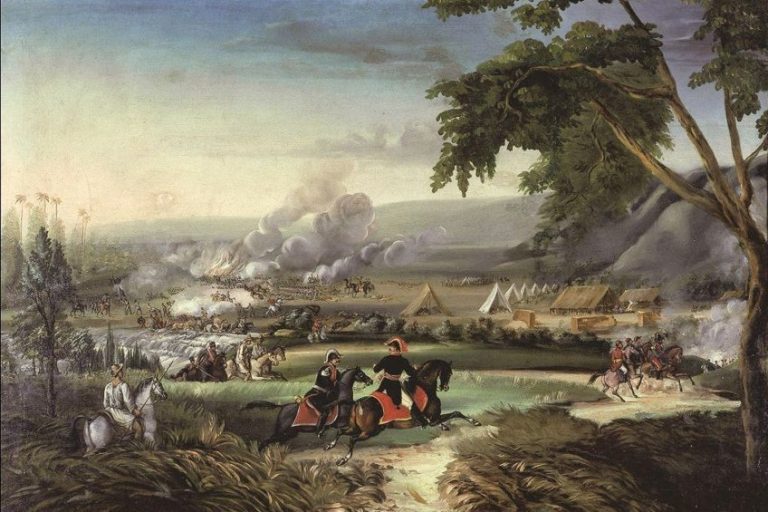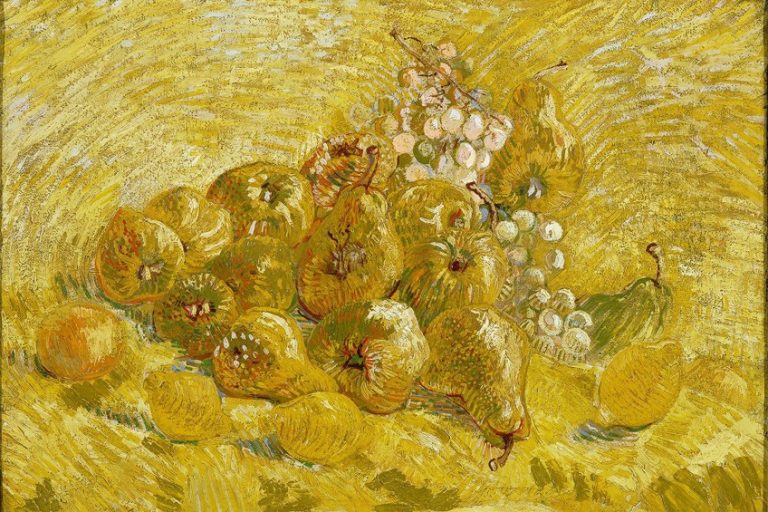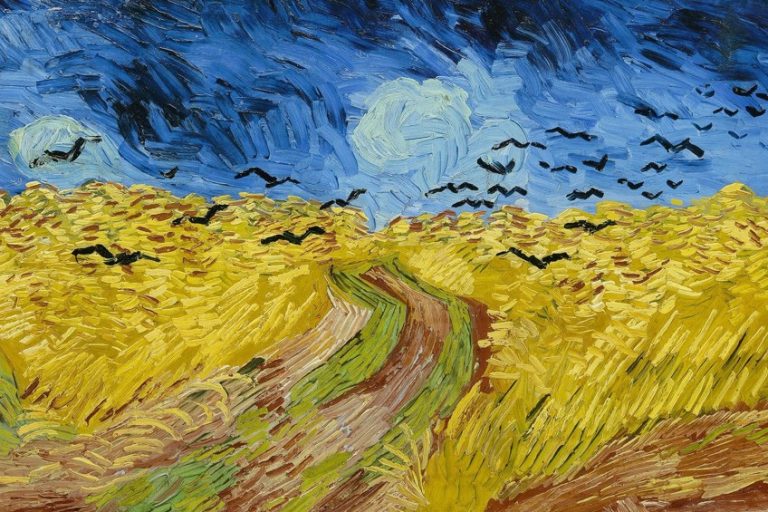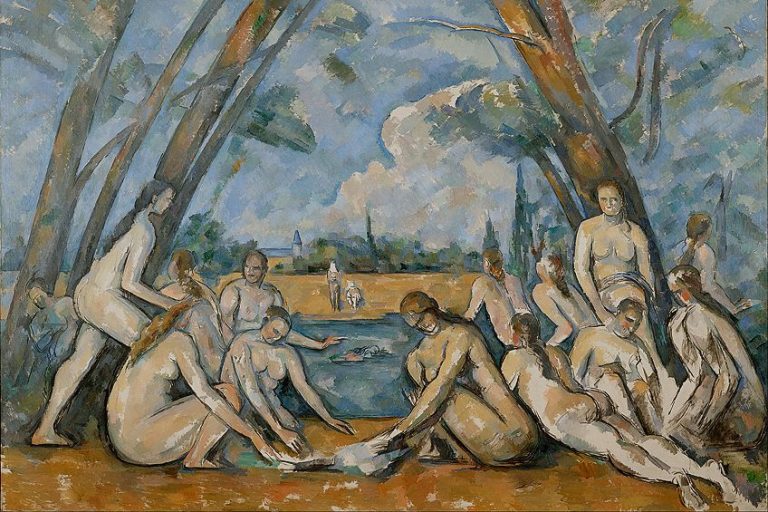Symbolism Art – History of the Symbolist Movement
In this article, we will be exploring the question: “what is symbolism in art?” Artists who used symbolism conveyed concepts through symbols and stressed the significance underlying the shapes, lines, patterns, and tones, as compared to Impressionist artists, who focused on the actuality of the painted object itself. The artworks of certain symbolist painters represent the demise of the Classical-era traditions of visual arts. Symbolism art definitions state that the movement was at the vanguard of modernism in that it established new and sometimes abstract techniques to portray cognitive truth and the belief that there was a spiritual existence beyond the physical world.
Table of Contents
What Is Symbolism in Art?
The focus on feelings, sentiments, concepts, and individuality rather than reality is what links the numerous painters and forms connected with the Symbolist movement. Many Symbolist art examples contain personal information and communicate their own philosophies, notably the artist’s confidence in his or her ability to expose the truth.

Symbols in art were a blend of religious mystique, the grotesque, the sexual, and the degenerate in regards to the particular subject matter. The supernatural, the macabre, the dreaming realm, sadness, wickedness, and mortality are common themes among artists who used symbolism.
Symbolist painters strived for complexity and implication of the intimate, half-stated, and cryptic allusions demanded by their intellectual and musically inclined equivalents, rather than one-to-one, immediate symbolism present in previous forms of commercial iconography.
The Symbolism movement served as a bridge between early 19th-century Romanticism and 20th-century modernism. Furthermore, the globalism of Symbolism calls into question the popularly assumed historical direction of contemporary art in France spanning from the Impressionist era until the Cubist period.
The Concepts and Styles of Symbolism Art
The Symbolism movement developed at a time of turmoil in ethical, societal, theological, and academic views. The globe was growing beyond European conventions, and socialism no longer comprised the good objectives that it began with.
Faith, as well as the link between love and relationships, were being called into doubt.
Artists who used symbolism, particularly, felt lonely and apart from the elite. However, the concept of the mystical was crucial in the formation of symbols in art and expressed anti-materialist ideas preoccupied with mysticism.

This notion was linked to a curiosity in the spirit world, as well as a palate for the macabre and depraved, as this era is often defined as one of “indulgence,” an era of creative or ethical deterioration as seen in the desire for the unrealistic over the organic – and, by implication, the notion that civilization was in decline. Symbolist painters (and authors) stressed the notion of art just for art’s sake, since they were generally opposed to practical uses for art (as opposed to Art Nouveau painters), and they also felt that painting did not have to connect to daily reality.
Synthetism and Symbolism
Grasping Symbolist aesthetics requires a comprehension of synthetism particularly. Syntheticism artists mixed aspects from the actual world with components drawn from previous works of art or types of art to construct alternative realities. Among some of the Symbolist inclinations was an emphasis on absorbing sound into art; this concept was motivated by Arthur Schopenhauer, who viewed sound as an artistic medium that directly transmitted its significance.

This feature of music was replicated by visual creatives. They also employed musical approaches to organizing works, such as leitmotifs, which are recurrent parts that unite the work. Symbolist painters were especially drawn to Richard Wagner’s music, which he thought contained spiritual energies and envisaged a broad union of the arts.
Thus, whether through optical or auditory stimuli, artists who used Symbolism strove to translate obtuse experiences into some type of sensual representation.
Art Nouveau and Symbolism
Art Nouveau is thought to be a subtype of Symbolism. There are a lot of commonalities in Symbolist and Art Nouveau subject matter, such as the indulgent topics of Aubrey Beardsley’s work, but Art Nouveau is much more precisely an ornamental aesthetic predicated on natural form and implemented in all art forms, as in any item that can be made “expressive,” such as brooches, soft furnishings, and so on.
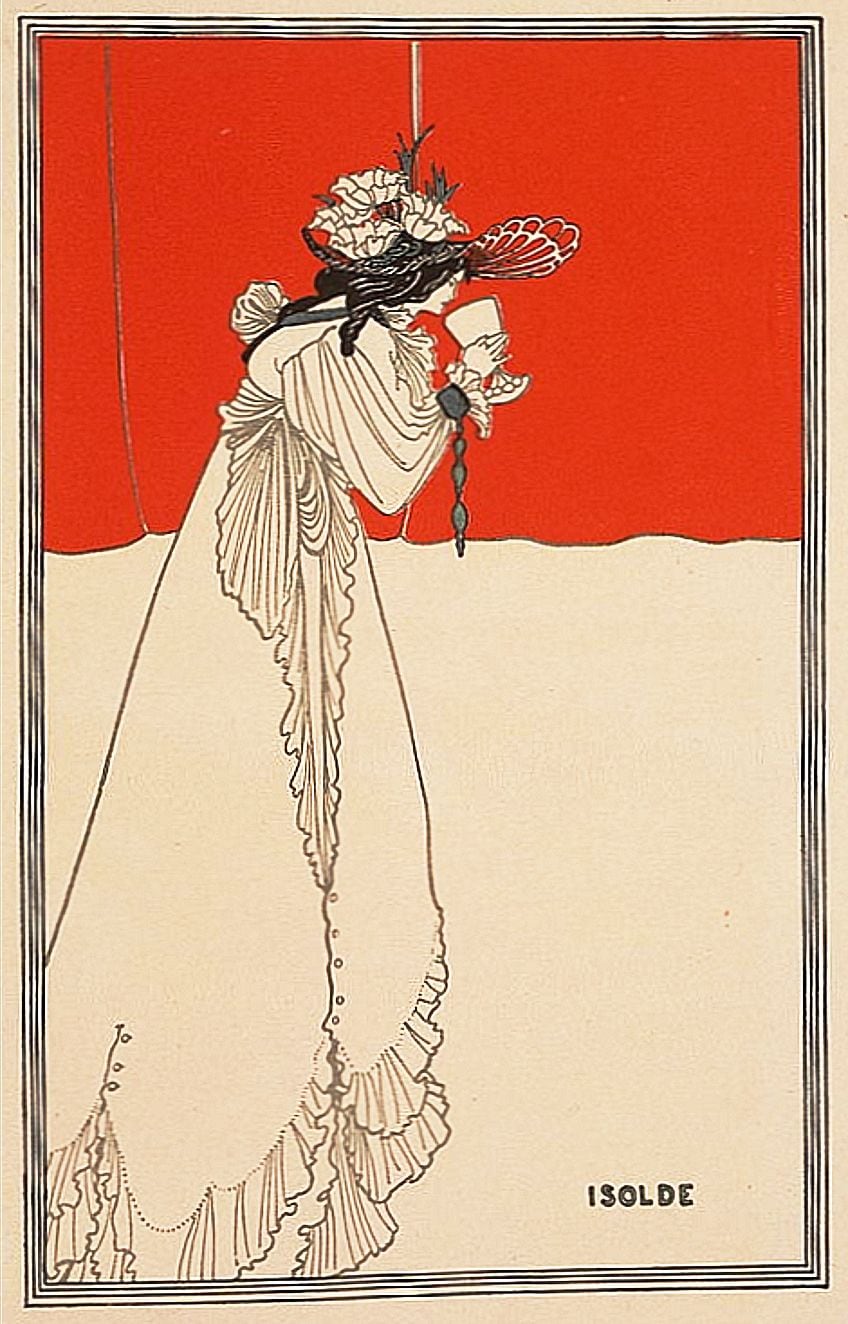
It is impossible to pinpoint its origins, although most experts believe that it originated in Belgium with Victor Horta’s works. Yet, the style immediately gained international acclaim. The goal of Creative Nouveau was to establish a style that could be extended to all forms of art and so coexist with the necessities of the machinery era and contemporary world.
Global Symbolism
In the visual arts, most academics define the Symbolism art definition as an approach towards subject matter instead of a style, as it was more obviously in literature. Most late 19th-century Symbolist painters were affected by the social and moral turmoil of the time, culminating in intimate, metaphysical, esoteric, and sometimes cryptic symbols and topics pertaining to the apparent depravity of the time. To differing levels and from diverse graphical sources, the artworks of painters from many nations participated in this concept.
We start in France, where the word “Symbolism” was first used to characterize this occurrence and the aesthetic was standardized.
French Symbolism
Odilon Redon and Gustave Moreau were two of France’s most prominent Symbolist painters. Moreau was influenced by Romantic painters like Eugène Delacroix, as well as the foreign in general. In his construction of fantastical dreamscapes, Redon was motivated by the Romantics as well as Francisco Goya, which explains the unsettling quality of his works.

The Nabis
The Nabis were a group of artists who used Symbolism, created in 1889 by Paul Sérusier, and were inspired by his artwork, The Talisman (1888). While they did not share the same political or religious beliefs as other Symbolists, the Nabis desired to connect with a higher force; they felt that the artist played the role of a holy man with the ability to unveil the unseen.
Their technique evolved further from Paul Gauguin’s work, shown in flattening and stylization.
However, the subject matter differed, as they focused on residential interiors, as with Pierre Bonnard and Édouard Vuillard. Many of the Nabis painters were published with their scholarly equivalents in the Symbolist journal La Revue Blanche.
Rosicrucianism and Symbolism
The Rosicrucians were a collection of artists led by writer Sar Joséphin Péladan who adhered to the esoteric doctrines of the alleged 15th-century clairvoyant Christian Rosenkreuz. They denounced the age’s consumerism and resurrected Catholicism and Renaissance art, but with spiritual, occult connotations. For this community, art was a means of introduction to religious enlightenment.
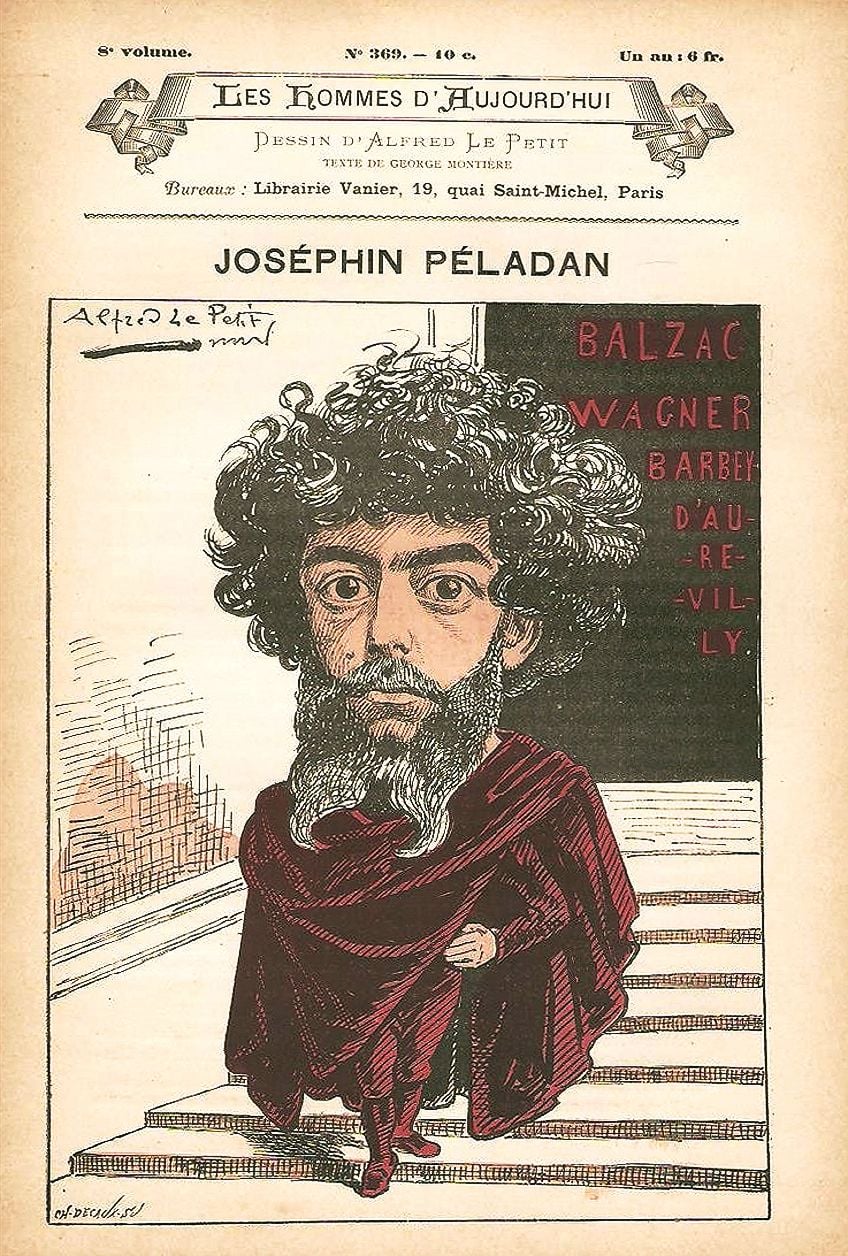
Their works adopted the type of mystical metaphor but were more conventional in style. This Symbolist group included the artists Armand Point, Charles Filiger, and Marcellin Desboutin, who showed in the Rose and Croix Salons in Paris for five years from 1892 onwards. These salons were notable because they featured the works of a multitude of painters from nations other than France.
Symbolism in Belgium and England
Fernand Khnopff, whose works maintain a certain amount of depravity, and the more eccentric James Ensor, who examined the meaning of masks, were the two most notable painters in Belgium. Symbolism may be observed in the artwork of Aubrey Beardsley and Oscar Wilde in the 1890s, which can be regarded as “indulgent,” with a focus on the sensual. Beardsley investigated Symbolist topics such as the concept of the femme fatale, King Arthur’s medieval fantasy realm, and Richard Wagner’s music.
Beardsley’s approach, on the other hand, is more akin to Art Nouveau, with which he is also affiliated.
Symbolism in the Rest of the World
Arnold Böcklin produced his “mood landscapes” in Switzerland by combining pictures from his mind. His compatriot Ferdinand Hodler created works such as Night (1889 – 1890) and Day (1899 – 1900), which are distinguished by more expressionistic and styled figures, as well as the utilization of representations and analogies, instead of icons as such – though the stances and expressions of his figures appear to represent various states of being.
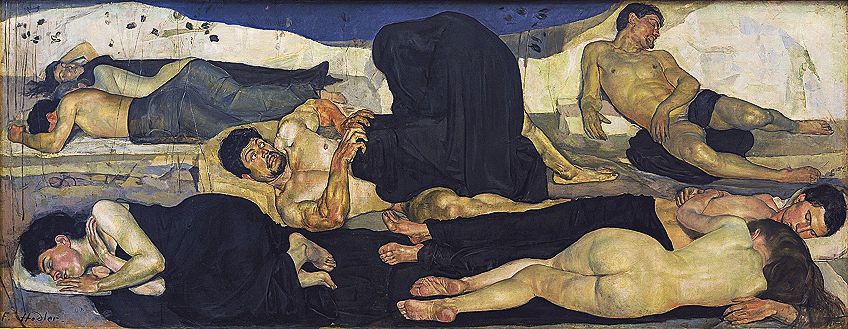
Giovanni Segantini, an Italian artist, developed magical views of the Swiss Alps. A significant, if brief, group of Symbolist painters arrived from Holland, notably Johan Thorn Prikker and Jan Toorop, both of whom developed quintessential Symbolist images. Stage designs were donated by Russian Symbolist painters such as Leon Bakst.

Important Symbolism Artists and Their Artworks
Now we will look at a few select Symbolism art examples. These artists and their artworks properly represent and embody the Symbolism art definition. Their use of symbols in art is world-renowned.
Gustav Moreau (1826 – 1898)
| Nationality | French |
| Date of Birth | 6 April 1826 |
| Date of Death | 18 April 1898 |
| Place of Birth | Paris, France |
Gustave Moreau’s mystical works connect to a contemporary concern with the unearthly, morbid, and life of the mind, rendering him one of the most compelling 19th-century artists for current audiences. Moreau went about portraying the creations of his mind on canvas with precise realism, inspired in part by his peculiar theological philosophy, which has been labeled Neo-Platonist, emphasizing the flaws and fragility of the physical world.
He thought he was enabling heavenly vision to communicate via his paintbrush by doing so. Moreau’s works, which typically show scenes from biblical or legendary themes, are crowded with confusing symbolism, which he took to reflect particular wants and emotions in abstract shapes, holy and mortal creatures caught in battle, and weird images of sex and misery.
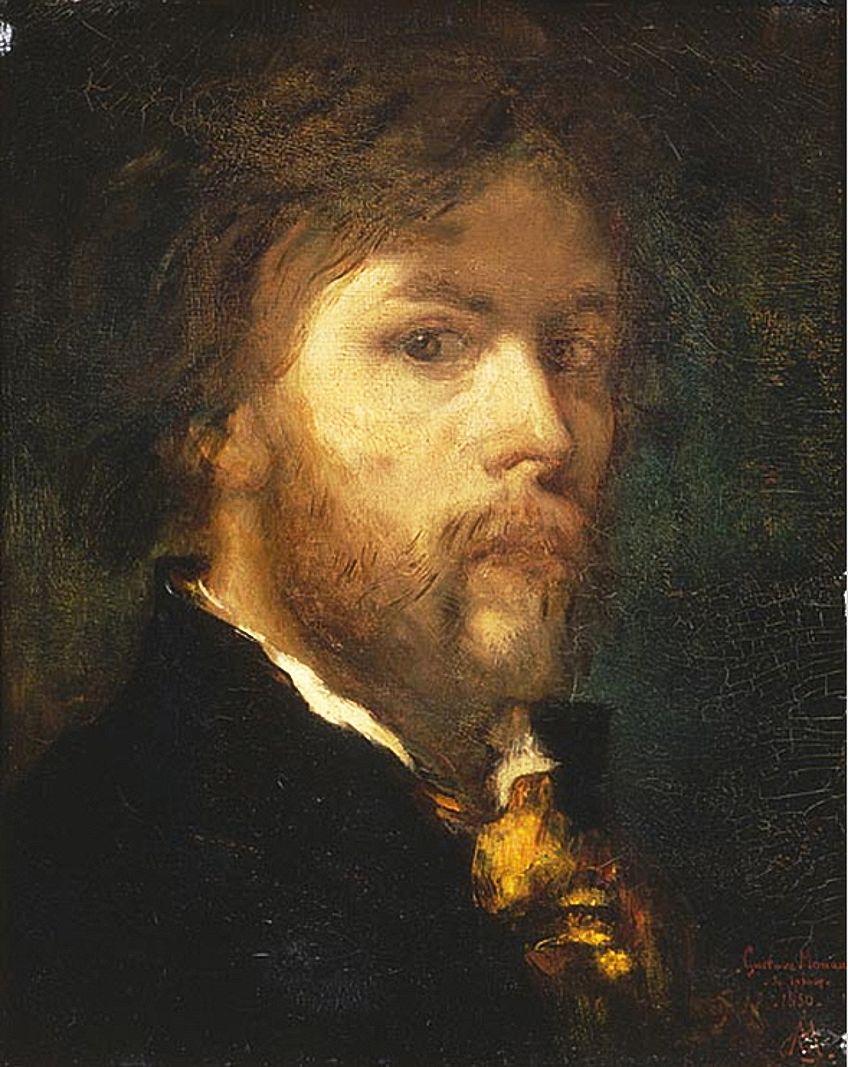
His art foreshadows not just following trends like Symbolism (of which he was a predecessor) and Surrealism, but also the specific problems of our own day, regarded as having given free license to the deepest and most hidden urges of the human psyche.
Jupiter and Semele (1895)
| Artist | Gustave Moreau |
| Date Created | 1895 |
| Medium | Oil Paint |
| Current Location | Musée national Gustave Moreau |
This artwork depicts the tale of Jupiter, the heavenly monarch of the gods, and Semele, who, on the advice of Jupiter’s spouse Juno, requests Jupiter to make love to her in his glorious splendor. Jupiter can’t resist the allure of her attractiveness, even though he knows she’ll be devoured by his brilliance and the fire of his majesty. As a result, the picture represents humanity’s connection with the divine, which culminates in death.

Nevertheless, as the artist pointed out, “Everything has been altered, cleansed, and glorified. Immortality starts, and the Divine penetrates all.” Death, decay, and regeneration are all themes that emerge.
Moreau, like Wagner, followed in Wagner’s footsteps, making images in the manner of symphonic poetry in their wealth of color and appearance, albeit this same trait stopped him from highlighting the more contemporary parts of Symbolism. The painter used a more orthodox technique to communicate but as with Symbolism, meaning emerges from the shapes themselves; mankind is small-scaled and fragile in its visceral lusciousness.
Jupiter’s ambiguous appearance alludes to the loneliness of the daydreaming artist and the existence of thoughts.
Moreau, who is crucial to any study of Symbolism, added to the more literary components of Symbolism, taking his topics from the Scriptures or, as in this case, mythology – while also pointing out a few of the modern age’s fears and anxieties.
Odilon Redon (1840 – 1916)
| Nationality | French |
| Date of Birth | 20 April 1840 |
| Date of Death | 6 July 1916 |
| Place of Birth | Bordeaux, France |
Odilon Redon is regarded as one of the most prominent and unique Symbolist painters. His imaginative works are inspired by the worlds of dreams, imagination, and fantasy. He rose to prominence with his noirs series, a collection of monochromatic works that make use of the emotive and provocative possibilities of the color black.

His lithographs, which often reconfigured earlier illustrations, became a way for him to widen his viewers as well as to discover different themes or literary works in series – he was especially attracted to Poe’s, Flaubert’s, and Mallarmé’s Romantic and Symbolist works. Later, Redon gradually began to use a more vivid palette, and his pastel and oil works are exuberant with color, primarily portraits and flower still lifes.
His meeting with the Nabis exposed him to a more ornamental style, and his later works feature Japonism as well as an emphasis on flattened, abstract designs and ornamental groupings. Redon had a huge influence on the artwork of his colleagues, such as Paul Gauguin, as well as subsequent contemporary painters such as Marcel Duchamp.
His lithographs were adored by Symbolist writers of the time, as well as subsequent Surrealists, for their sometimes odd and magical topics, many of which combined scientific investigation with imaginative vision.
The Eye Like a Strange Balloon Mounts Toward Infinity (1882)
| Artist | Odilon Redon |
| Date Created | 1882 |
| Medium | Lithograph |
| Current Location | Museum of Modern Art |
Despite the fact that Edgar Allan Poe had already been dead for about 33 years at the moment of Redon’s lithograph, this is not a reproduced account of Poe’s work; rather, it is concurrent to it in its incantation of the writer’s grisly universe. The single eye is an old emblem, but it is changed here. The vast magnitude of the eye represents the spirit coming forth from the swamp’s lifeless body.
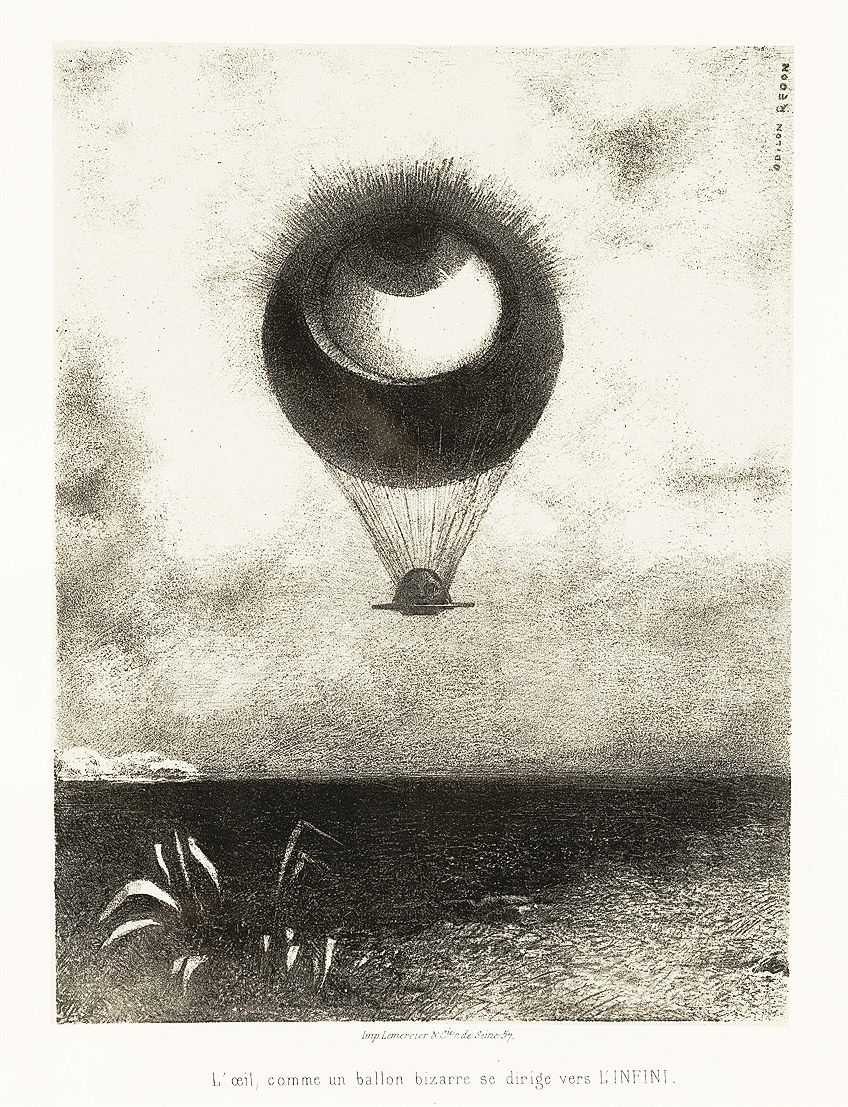
It is a physical instrument that looks skyward toward the almighty, carrying the dead skull with it. The ethereal area, as well as the halo of light around the primary picture, contribute to the notion of the supernatural. Within a fantasy realm, the piece inspires a sense of wonder. Redon’s paintings, however, should not be mistaken with Surrealism since they are intended to produce a cohesive, precise notion – the head as the genesis of the creativity and the soul embedded in matter.
Furthermore, Redon’s paintings differ from Surrealism in that the idea may be constructed. Redon’s images are ethereal and grotesque, yet they are the ultimate reality. “I addressed the unlikely through the unusual and thus offer visual coherence to the imaginative aspects which I noticed,” the painter stated. Redon was into modernism, more so than other Symbolists.
Even though a Symbolist, he was also fascinated by the materialism of the period, such as Charles Darwin’s research on adaptation, the examination of zoological species, and, as demonstrated in this piece, the engineering of hot air balloons.
His art was a depiction of his own inner universe portrayed in personal symbols – making it more accessible to interpretation – and allowed the audience to comprehend what hidden truths lie inside the shapes.
James Ensor (1860 – 1949)
| Nationality | Flemish |
| Date of Birth | 13 April 1860 |
| Date of Death | 19 November 1949 |
| Place of Birth | Ostend, Belgium |
Despite being trained in conventional painting, Ensor immediately abandoned it in favor of developing a new style that expressed his own perspective on current life. He was particularly attracted by the popular carnival culture structured around the annual celebration of Mardi Gras across Belgium, which was likely inspired by the fact that his family’s business in Ostend was a major retailer of carnival goods.
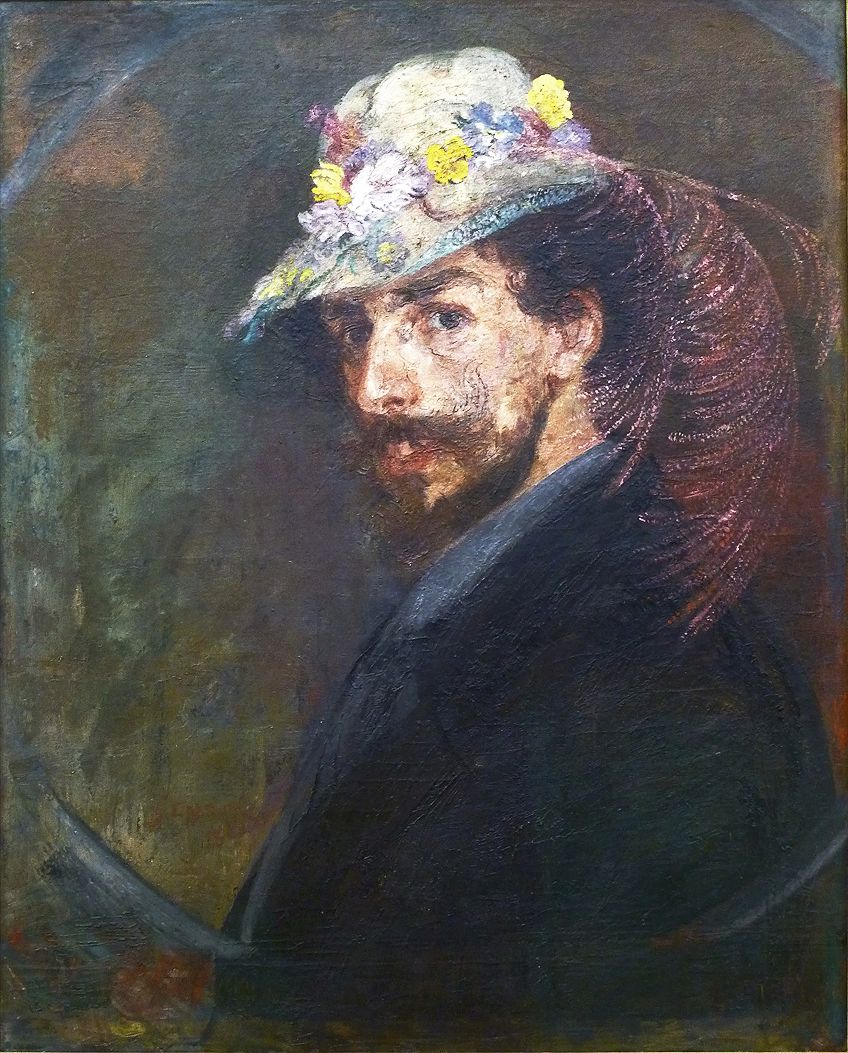
His artwork is continually sardonic and ridiculing, exhibiting an almost grotesque version of Realism aiming to chronicle the tensions underlying modern social morays of his day, and most likely of all times. Ensor created a breakthrough painting technique that was more suited to his particular purpose. He began to generate volume using patches of color over the surface of the painting, discarding the use of illusionism and one-point viewpoint to order the image represented. As a result, the images no longer faded but rather threatened to infiltrate the viewer’s area.
The figures in Ensor’s paintings command attention while being crammed to the brim and deprived of breathing space.
Death and the Masks (1897)
| Artist | James Ensor |
| Date Created | 1897 |
| Medium | Oil Paint |
| Current Location | J Paul Getty Museum, Los Angeles |
Ensor gives the skull of Death in the middle, with its sinister smile, and the masks of the individual’s realistic features; the mask has become the face, but it is still a disguise that seeks to conceal the inner emptiness of the elite and the depravity of the times. The packed composition implies that this is a widespread issue and that the picture reflects the artist’s indictment of current society.

Ensor was interested in masks since his mother had a tourism store that sold items like these papier-mache masks worn during Carnival in Belgium. Ensor wished for a return to the “raw and organic” local funfairs and celebrations of his home Belgium in order to foster unification, but he knew that tourists, capitalism, and industrialization would prevent this from happening.
Furthermore, Ensor was the successor to the entire Northern heritage of exaggeration, the bizarre, and fantastical, which can be observed in the works of Hieronymus Bosch. However, unlike the realistic roots of Bosch and Bruegel art, Ensor chooses a light, brilliant palette that conveys playfulness and folly while also employing a rough and tactile distribution of paint that indicates the profundity and tragedy of the times.
Therefore, well before Expressionists, Ensor used primal color and violent textures to disrobe to the levels of the human psyche, dividing its recesses – in addition to augmenting his Symbolic lexicon with nuanced political connotations.
And with that, we conclude our exploration of Symbolism art. We have answered the question “what is symbolism in art? We have looked at several Symbolism art examples and explored the symbolism art definition. We have learned that symbols in art have been used by artists to express ideas and notions that cannot be conveyed by everyday reality and objects which exist therein.
You can also read our art symbols web story.
Frequently Asked Questions
What is Symbolism in Art?
The Symbolist movement’s different painters and genres are linked by its emphasis on feelings, sentiments, conceptions, and personality rather than actuality. Many examples of Symbolist work incorporate personal information and express their own ideologies, most notably the artist’s faith in his or her capacity to uncover the truth. In terms of the subject matter, symbols in art were a mix of religious mystery, the grotesque, the sexual, and the depraved. The occult, macabre, the dreaming realm, grief, evil, and mortality are all prominent subjects among symbolist painters.
What is the Symbolism Art Definition?
The Symbolism movement arose at a period of upheaval in ethical, sociological, religious, and scholarly perspectives. The world was expanding beyond European standards, and socialism no longer embodied the noble goals that it had begun with. Faith, as well as the connection between love and relationships, were being questioned. Symbolist artists, in particular, felt alone and excluded from the elite. The concept of the mystical, on the other hand, was vital in the construction of symbols in art and conveyed anti-materialist beliefs fascinated with mysticism.
Isabella studied at the University of Cape Town in South Africa and graduated with a Bachelor of Arts majoring in English Literature & Language and Psychology. Throughout her undergraduate years, she took Art History as an additional subject and absolutely loved it. Building on from her art history knowledge that began in high school, art has always been a particular area of fascination for her. From learning about artworks previously unknown to her, or sharpening her existing understanding of specific works, the ability to continue learning within this interesting sphere excites her greatly.
Her focal points of interest in art history encompass profiling specific artists and art movements, as it is these areas where she is able to really dig deep into the rich narrative of the art world. Additionally, she particularly enjoys exploring the different artistic styles of the 20th century, as well as the important impact that female artists have had on the development of art history.
Learn more about Isabella Meyer and the Art in Context Team.
Cite this Article
Isabella, Meyer, “Symbolism Art – History of the Symbolist Movement.” Art in Context. January 17, 2022. URL: https://artincontext.org/symbolism-art/
Meyer, I. (2022, 17 January). Symbolism Art – History of the Symbolist Movement. Art in Context. https://artincontext.org/symbolism-art/
Meyer, Isabella. “Symbolism Art – History of the Symbolist Movement.” Art in Context, January 17, 2022. https://artincontext.org/symbolism-art/.




